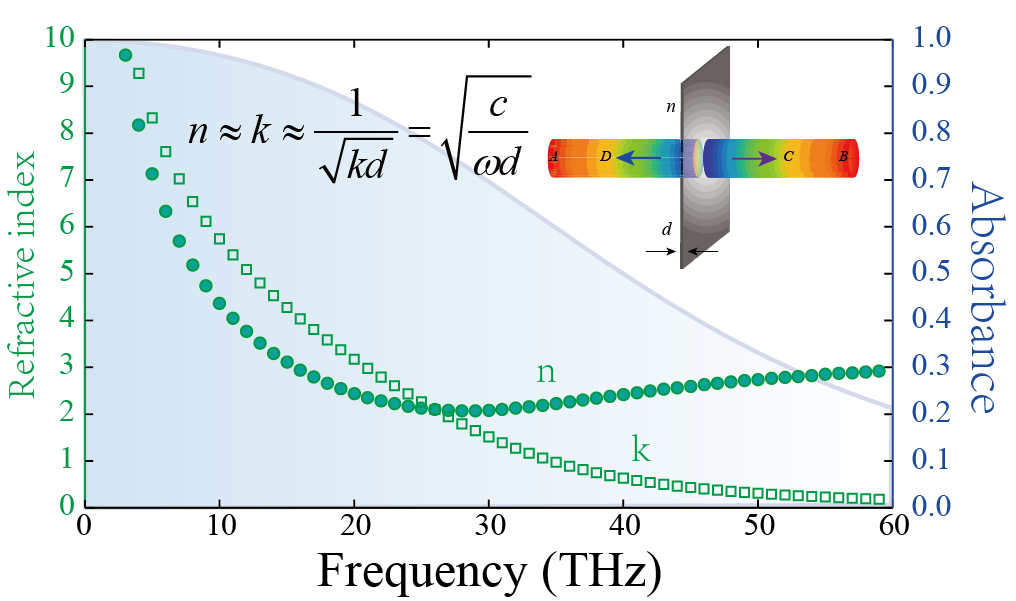Anti-laser on:
[Wikipedia]
[Google]
[Amazon]
A coherent perfect absorber (CPA), or anti-laser, is a device which absorbs coherent light and converts it to some form of internal energy such as heat or electrical energy. It is the time-reversed counterpart of a 
laser
A laser is a device that emits light through a process of optical amplification based on the stimulated emission of electromagnetic radiation. The word "laser" is an acronym for "light amplification by stimulated emission of radiation". The fi ...
. The concept was first published in the July 26, 2010, issue of ''Physical Review Letters
''Physical Review Letters'' (''PRL''), established in 1958, is a peer-reviewed, scientific journal that is published 52 times per year by the American Physical Society. As also confirmed by various measurement standards, which include the ''Journa ...
'', by a team at Yale University
Yale University is a Private university, private research university in New Haven, Connecticut. Established in 1701 as the Collegiate School, it is the List of Colonial Colleges, third-oldest institution of higher education in the United Sta ...
led by theorist A. Douglas Stone
A. Douglas Stone is the Carl Morse Professor of Applied Physics and Physics at Yale University. He was the 2014 recipient of the Phi Beta Kappa Award in Science for his book ''Einstein and the Quantum: The Quest of the Valiant Swabian''.
He has a ...
and experimental physicist Hui W. Cao. In the September 9, 2010, issue of '' Physical Review A'', Stefano Longhi of Polytechnic University of Milan
The Polytechnic University of Milan () is the largest technical university in Italy, with about 42,000 students.
The university offers undergraduate, graduate and higher education courses in engineering, architecture and design.
Founded in 186 ...
showed how to combine a laser and an anti-laser in a single device. In February 2011 the team at Yale built the first working anti-laser. It is a two-channel CPA device which absorbs the output of two lasers, but only when the beams have the correct phases and amplitudes. The initial device absorbed 99.4 percent of all incoming light, but the team behind the invention believe it will be possible to achieve 99.999 percent.
Originally with the FP cavity, the optical CPA operates to a specific frequency and the wavelength-thick material. In January 2012, thin-film
A thin film is a layer of material ranging from fractions of a nanometer (monolayer) to several micrometers in thickness. The controlled synthesis of materials as thin films (a process referred to as deposition) is a fundamental step in many ap ...
CPA has been proposed by utilizing the achromatic dispersion of metal, exhibiting the unparalleled bandwidth and thin profile advantages. This theoretical evaluation was experimentally demonstrated in 2014.

Design
In the initial design, identical lasers are fired into a cavity containing asilicon
Silicon is a chemical element with the symbol Si and atomic number 14. It is a hard, brittle crystalline solid with a blue-grey metallic luster, and is a tetravalent metalloid and semiconductor. It is a member of group 14 in the periodic ta ...
wafer, a light-absorbing material that acts as a "loss medium". The wafer aligns the light waves from the lasers so they become trapped, causing most of the photon
A photon () is an elementary particle that is a quantum of the electromagnetic field, including electromagnetic radiation such as light and radio waves, and the force carrier for the electromagnetic force. Photons are massless, so they a ...
s to bounce back and forth until they are absorbed and transformed into heat. Furthermore, many of the remaining light waves are cancelled out by interfering with each other. In contrast, a normal laser uses a gain medium
The active laser medium (also called gain medium or lasing medium) is the source of optical gain within a laser. The gain results from the stimulated emission of photons through electronic or molecular transitions to a lower energy state from a h ...
which amplifies light instead of absorbing it.
Applications
Coherent perfect absorbers can be used to build absorptive interferometers, which could be useful in detectors, transducers, and optical switches. Another potential application is in radiology, where the principle of the CPA might be used to precisely target electromagnetic radiation inside human tissues for therapeutic or imaging purposes.References
Photonics Quantum optics {{Optics-stub